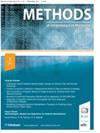使用基于规则的算法从电子健康记录中识别肺炎亚型。
IF 1.8
4区 医学
Q3 COMPUTER SCIENCE, INFORMATION SYSTEMS
引用次数: 2
摘要
背景国际疾病分类(ICD)对肺炎分类的编码是基于病因或通用肺炎编码的使用,这给流行病学评估带来了挑战,因为肺炎通常按环境、暴露和出现时间进行分型。肺炎亚型分类需要电子健康记录(EHR)中的可用数据,通常是非结构化格式,包括使电子分类复杂化的放射学解释或临床记录。目的本研究开发了一种基于规则的肺炎亚型算法,用于根据EHR中记录的信息对肺炎进行分层。方法肺炎亚型分类是通过询问大型私人卫生系统EHR中的患者信息而开发的。ICD编码在EHR中进行了挖掘,应用了“二规则”肺炎相关代码或一个ICD代码的要求,以及通过自然语言处理和/或记录的抗生素处方验证的放射学证实的肺炎。创建了一个基于规则的算法流程图,以支持基于以下特征的子分类,这些特征包括有症状的患者进入医疗保健系统的时间、肺炎出现的时间以及为肺炎子分类算法的定义提供信息的临床、实验室或药物订单的识别。结果分析了65904名符合研究条件的患者的数据,这些患者在380509次接触中记录了91998次肺炎发作,而在NLP将肺炎状态分类为“阴性”或“未知”后,8611次发作被排除在外。确定的83387例发作的亚型:社区获得性(54.5%)、医院获得性(20%)、抽吸相关(10.7%)、医疗保健获得性(5%)、呼吸机相关(0.4%)和9.4%无法通过算法进行分类。结论研究结果表明,有能力根据EHR中可用的大数据实现电子肺炎亚型分类。在其他卫生系统中检查算法的可移植性以实现基于规则的肺炎分类仍有待探索。本文章由计算机程序翻译,如有差异,请以英文原文为准。
Identifying Pneumonia Sub-types from Electronic Health Records Using Rule-based Algorithms.
BACKGROUND
International Classification of Disease (ICD) coding for pneumonia classification is based on causal organism or use of general pneumonia codes, creating challenges for epidemiological evaluations, where pneumonia is standardly subtyped by settings, exposures and time of emergence. Pneumonia subtype classification requires data available in electronic health records (EHR), frequently in non-structured formats including radiological interpretation or clinical notes that complicate electronic classification.
OBJECTIVE
The current study undertook development of a rule-based pneumonia subtyping algorithm for stratifying pneumonia by the setting in which it emerged using information documented in the EHR.
METHODS
Pneumonia subtype classification was developed by interrogating patient information within the EHR of a large private Health System. ICD coding was mined in the EHR applying requirements for 'rule of two' pneumonia-related codes or one ICD code and radiologically-confirmed pneumonia validated by natural language processing and/or documented antibiotic prescriptions. A rule-based algorithm flow chart was created to support sub-classification based on features including symptomatic patient point of entry into the healthcare system timing of pneumonia emergence and identification of clinical, laboratory or medication orders that informed definition of the pneumonia sub-classification algorithm.
RESULTS
Data from 65,904 study-eligible patients with 91,998 episodes of pneumonia diagnoses documented by 380,509 encounters were analyzed, while 8,611 episodes were excluded following NLP classification of pneumonia status as 'negative' or 'unknown'. Subtyping of 83,387 episodes identified: community acquired (54.5%), hospital-acquired (20%), aspiration-related (10.7%), healthcare-acquired (5%), ventilator-associated (0.4%) cases, and 9.4% were not classifiable by the algorithm.
CONCLUSION
Study outcome indicated capacity to achieve electronic pneumonia subtype classification based on interrogation of big data available in the EHR. Examination of portability of the algorithm to achieve rule-based pneumonia classification in other health systems remains to be explored.
求助全文
通过发布文献求助,成功后即可免费获取论文全文。
去求助
来源期刊

Methods of Information in Medicine
医学-计算机:信息系统
CiteScore
3.70
自引率
11.80%
发文量
33
审稿时长
6-12 weeks
期刊介绍:
Good medicine and good healthcare demand good information. Since the journal''s founding in 1962, Methods of Information in Medicine has stressed the methodology and scientific fundamentals of organizing, representing and analyzing data, information and knowledge in biomedicine and health care. Covering publications in the fields of biomedical and health informatics, medical biometry, and epidemiology, the journal publishes original papers, reviews, reports, opinion papers, editorials, and letters to the editor. From time to time, the journal publishes articles on particular focus themes as part of a journal''s issue.
 求助内容:
求助内容: 应助结果提醒方式:
应助结果提醒方式:


